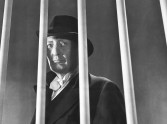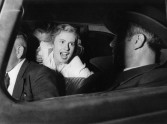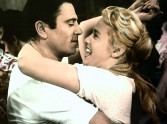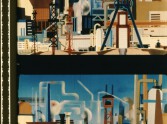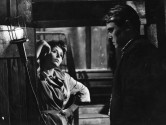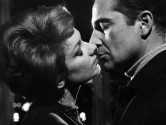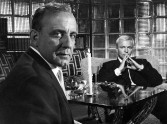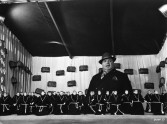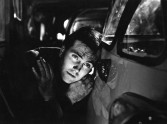
Mapping Gray Zones.
The Inexact Beauty of Early West German Cinema, 1949 – 1963
Industrial shorts
Outside West Germany’s movie industry at the time, one of the biggest promoters and producers of unusual films was the labor organizations. They brought forth some of the era’s most radical examples of realist cinema, as well as some of its most remarkable essays in abstraction. Technically, all of these films would be considered documentaries. Werftarbeiter and Menschen im Werk belong to the former group; like Asylrecht, they were made using amateurs often playing themselves (more or less) and in the process acting out labor disputes in front of the camera. The latter is actually the final work by a giant of world cinema, Gerhard Lamprecht, who from then on would focus his energies on raising awareness for the importance of film history, culminating in the founding of the first film archive in Germany: the Stiftung Deutsche Kinemathek. Schichten unter der Dunstglocke and Kahl, again, are prime examples of the above-mentioned documentaries with a taste for formal experimentation, the latter especially: all perfectly composed lines and eerily gorgeous shades of milky whites and glaring reds. It’s a feast for the eye; rarely has an atomic power plant looked so sexy.
PROGRAM
-
Labor and Management (Werftarbeiter)
Directed by Wolf Hart.
West Germany, 1951, 35mm, black & white, 17 min.
German with English subtitles.Layers Under the Haze (Schichten unter der Dunstglocke)
Directed by Herbert Viktor.
West Germany, 1959, 16mm, color, 15 min.
German with English subtitles.
Print source: BundesarchivKahl
Directed by Haro Senft.
West Germany, 1961, 35mm, color, 12 min.
German with English subtitles.
Print source: Deutsche KinemathekPart of film series


